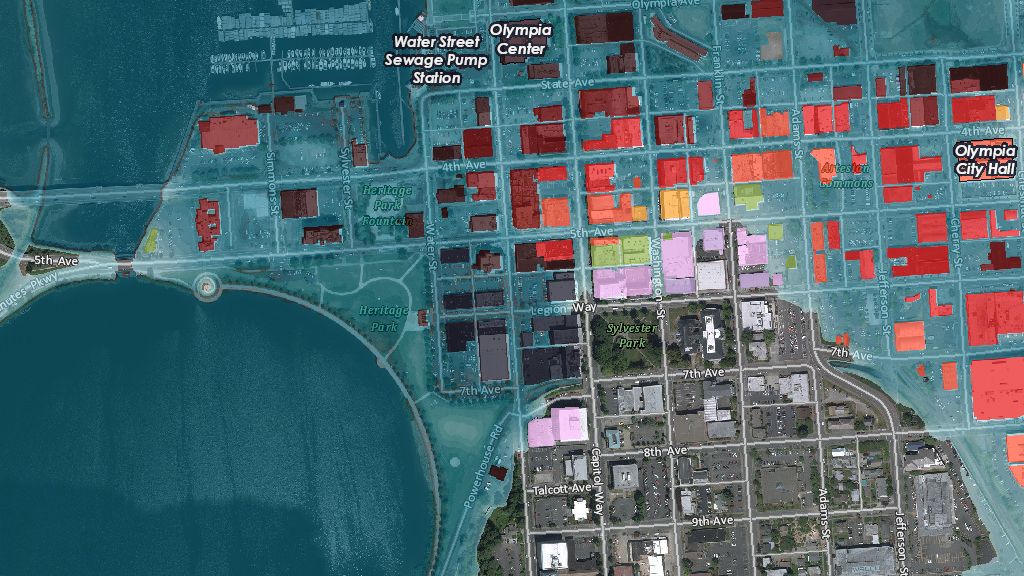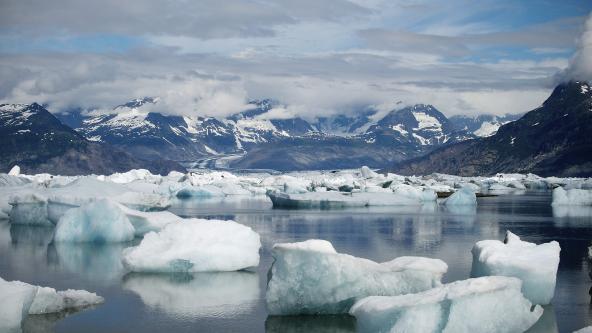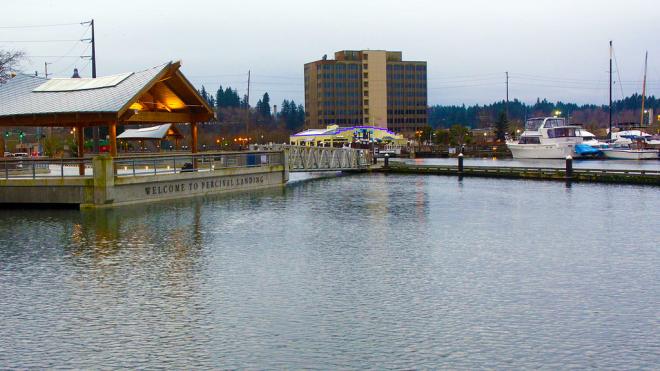
Planning for rising seawater in Puget Sound has often focused on public property such as roads, buildings and utilities. Now local governments are looking more closely at private property despite regulations based on traditional flooding history.

Cities, counties, state agencies and tribes are tackling the problem of rising seawater in various ways, with the greatest actions currently focused on protecting public property — such as roads, buildings and utilities.
While some cities and counties have talked about restricting private development in areas vulnerable to sea level rise, it appears nobody has adopted regulations to do that. The only rules cited by local officials are those tied to existing flood-hazard maps — which may or may not relate closely to future flooding caused by higher tides.
In some jurisdictions, sea-level rise is addressed in a general fashion during the shoreline permitting process, as suggested by state guidelines. But unless there’s a connection to past flooding, no regulatory controls exist to keep structures safe from future high tides.
A major part of the problem is that the range of possible sea-level rise is huge — anywhere from 4 to 56 inches in Seattle by the year 2100, said Tim Gates, shoreline policy lead for the Washington Department of Ecology. Such a wide range makes it difficult for city and county officials to know where to draw the no-build line.

Overcoming uncertainty
Lacking greater certainty, local officials tend to avoid asking property owners to contend with additional land-use rules, he said.
But that’s entirely the wrong approach to address sea-level rise, argues Tim Trohimovich, director of planning for Futurewise, a nonprofit advocacy group.
“People think they are safe, and then one day water will begin lapping at their front porch,” Trohimovich said, adding that government has a responsibility to protect its citizens from high water.
“I see it as basic consumer protection,” he said. “You take the best scientific evidence you have and you apply it to the problem. Throwing up your hands and saying we don’t know where sea levels will be is definitely not helping anyone.”
Nobody knows when a major earthquake will occur, he continued, but state and local building codes are written and updated as needed to protect against likely earthquake hazards, he said.
In the case of sea-level rise, local governments could begin by implementing regulations to protect structures against highly likely sea-level rise —somewhere near the middle of the projected range, he said. Along with that, property owners could be advised that sea levels may go even higher and that building farther back than required could reduce their risks.
The amount of property inundated by a future high tide depends on the elevation and slope of the land, among other things. Advice from a coastal geologist could help owners determine their best protection measures against future extreme tides plus high waves and storm surge.
“We know sea-level rise is happening,” Trohimovich said. “The sooner we start to address the problems, the less damage it is going to cause.”
Planning in Olympia
Local elected officials may find it easier to work on plans that protect public property. The city of Olympia, which is often mentioned as a leader in sea-level planning, has been measuring elevations and contemplating vulnerabilities in its downtown area for more than a dozen years, according to city planner Susan Clark.
Downtown Olympia was built largely on fill and remains low and flat, barely above today’s high tides. For that reason and to protect city property well into the future, engineers are working on designs to eventually withstand a 50-inch rise in tidal elevation, with interim projects proposed before things get that bad.
Raising the shoreline and building barriers in key downtown locations are feasible, because the city or the Port of Olympia owns most of the waterfront property. Tide gates and pump stations will be needed to prevent a backflow of seawater into the storm drains — something that already occurs during the highest tides. Some streets are likely to be elevated or even moved, according to the plans, and public buildings and sewer facilities may need to be placed on higher foundations.

Surveys of local planners and other officials have revealed a growing awareness of sea-level rise and increasing interests in developing local solutions, Talebi said. Often, sea-level rise is considered as part of other planning efforts, he said.
Many local and state agencies as well as tribal governments are in various stages of preparing for sea-level rise. Here are some examples:
“We could spend $50,000 a year to keep shoring up a road, but at some point you see an opportunity to do something better,” said Tina Whitman of Friends of the San Juans, a conservation group that supports shoreline restoration in San Juan County.
“On the planning side,” Whitman added, “let’s not let people scooch up to the shore as close as they can. Just look at the costs in terms of dollars and habitat losses.”

